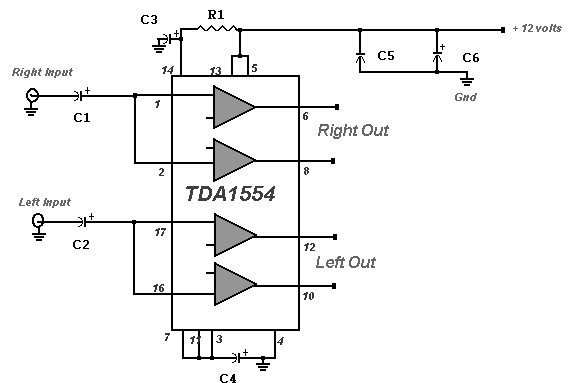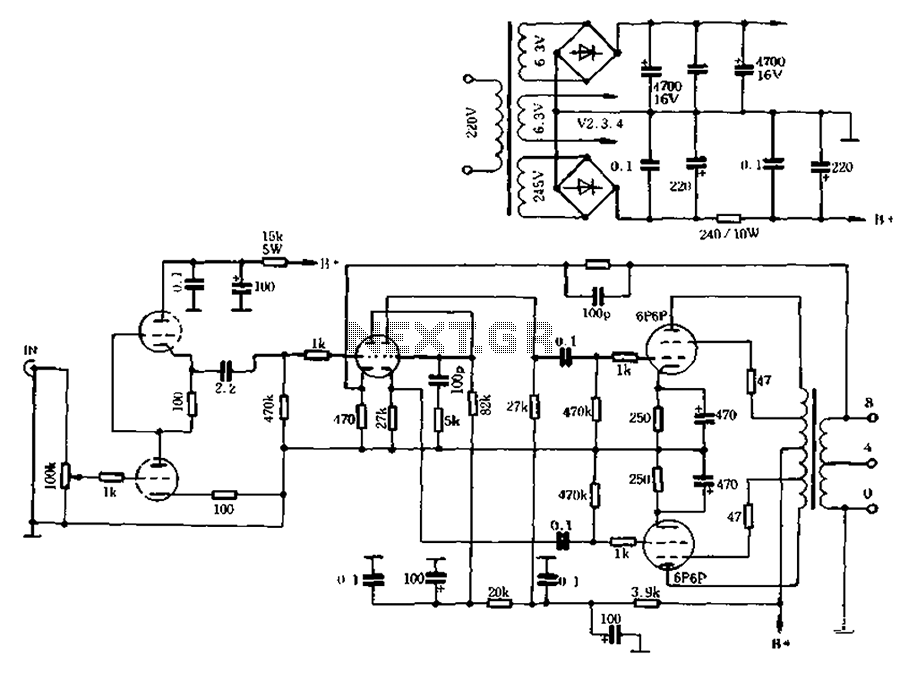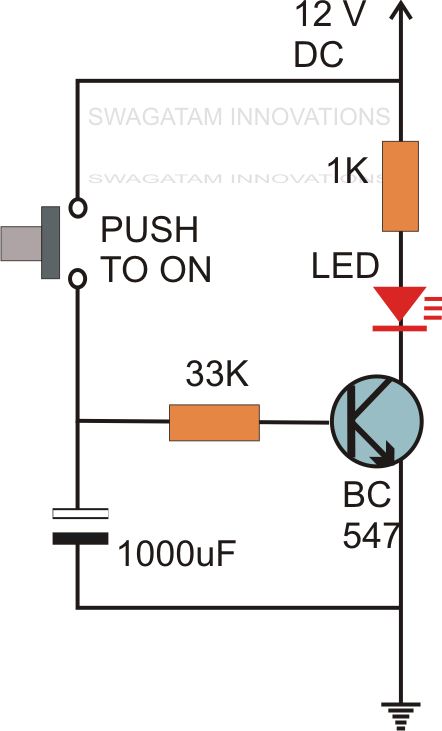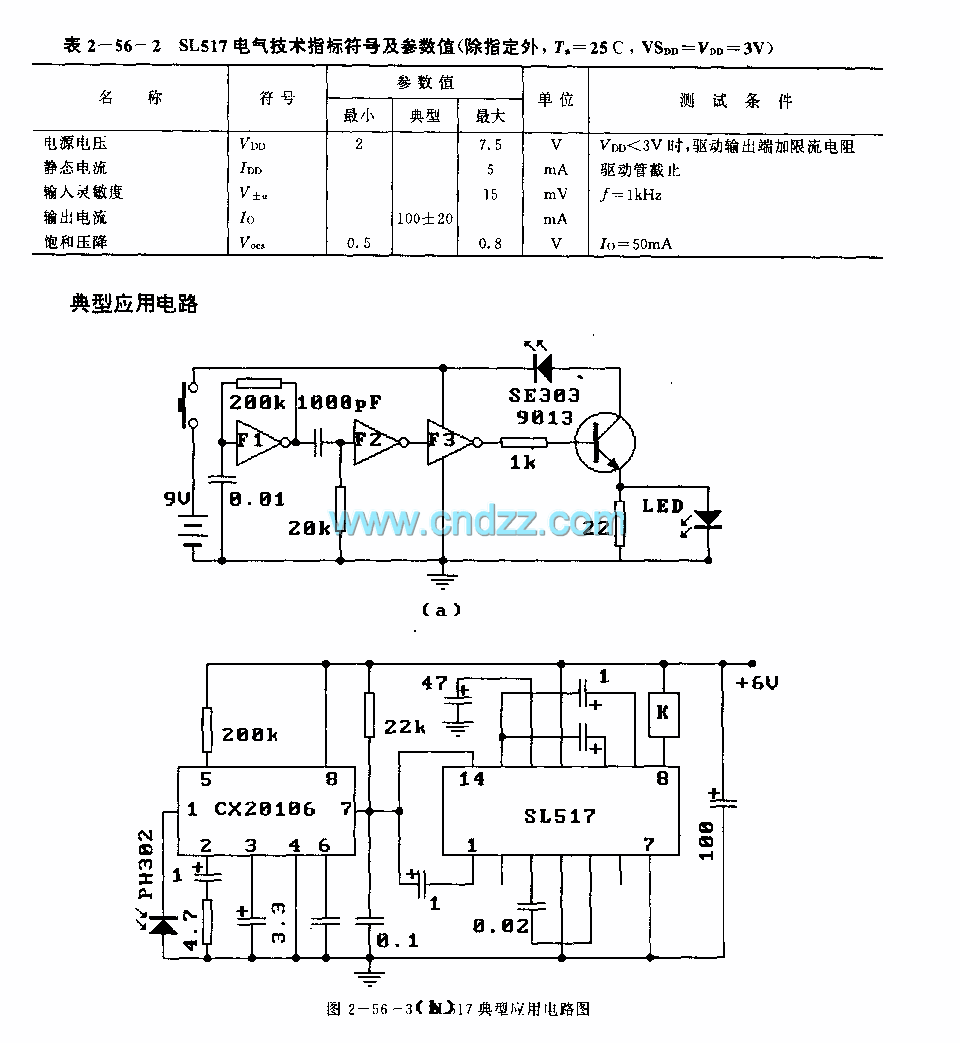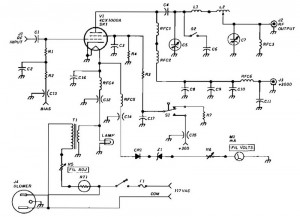
Simple Op Amp Audio Amplifier
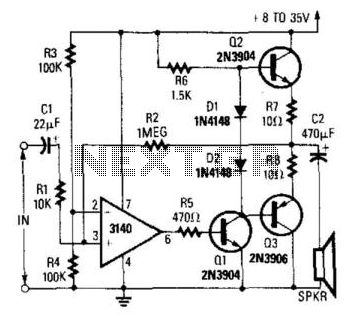
A CA3140 operational amplifier drives a complementary output stage consisting of transistors Q1, Q2, and Q3. The output power is influenced by the supply voltage and the thermal dissipation limits of transistors Q2 and Q3. Under optimal conditions, the output power can reach 1 to 2 watts when connected to a higher impedance speaker and powered by a 30-volt supply.
The circuit employs a CA3140 operational amplifier, which is known for its high input impedance and low output impedance, making it suitable for driving power transistors in audio applications. The complementary output stage utilizing Q1, Q2, and Q3 typically consists of NPN and PNP transistors configured to provide push-pull operation. This configuration enhances efficiency and allows for greater output power while minimizing distortion.
The output power capability of this circuit is contingent upon several factors, including the supply voltage, which in this case is specified at 30 volts, and the load impedance of the speaker connected to the output. Higher impedance speakers allow for greater power output, reaching up to 2 watts under ideal conditions.
Thermal management is critical in this design, as the power dissipation in transistors Q2 and Q3 must be carefully monitored to prevent overheating. Adequate heatsinking may be required to maintain safe operating temperatures, especially at higher output levels. The circuit may also include biasing resistors to set the quiescent current of the output stage, ensuring linear operation and minimizing crossover distortion.
Overall, this configuration is well-suited for audio amplification applications, providing a robust solution for driving speakers with sufficient power while maintaining sound quality. Proper attention to component selection and thermal management will enhance the reliability and performance of the circuit. A CA3140 drives a complementary output stage Ql, Q2, and Q3. Output power depends on supply voltage and limit s on dissipations of Q2 and Q3, but it can be 1 or 2 W with a higher impedance speaker and a 30-V supply.
The circuit employs a CA3140 operational amplifier, which is known for its high input impedance and low output impedance, making it suitable for driving power transistors in audio applications. The complementary output stage utilizing Q1, Q2, and Q3 typically consists of NPN and PNP transistors configured to provide push-pull operation. This configuration enhances efficiency and allows for greater output power while minimizing distortion.
The output power capability of this circuit is contingent upon several factors, including the supply voltage, which in this case is specified at 30 volts, and the load impedance of the speaker connected to the output. Higher impedance speakers allow for greater power output, reaching up to 2 watts under ideal conditions.
Thermal management is critical in this design, as the power dissipation in transistors Q2 and Q3 must be carefully monitored to prevent overheating. Adequate heatsinking may be required to maintain safe operating temperatures, especially at higher output levels. The circuit may also include biasing resistors to set the quiescent current of the output stage, ensuring linear operation and minimizing crossover distortion.
Overall, this configuration is well-suited for audio amplification applications, providing a robust solution for driving speakers with sufficient power while maintaining sound quality. Proper attention to component selection and thermal management will enhance the reliability and performance of the circuit. A CA3140 drives a complementary output stage Ql, Q2, and Q3. Output power depends on supply voltage and limit s on dissipations of Q2 and Q3, but it can be 1 or 2 W with a higher impedance speaker and a 30-V supply.
